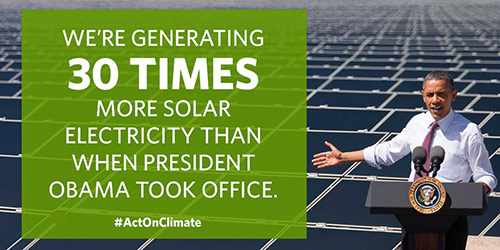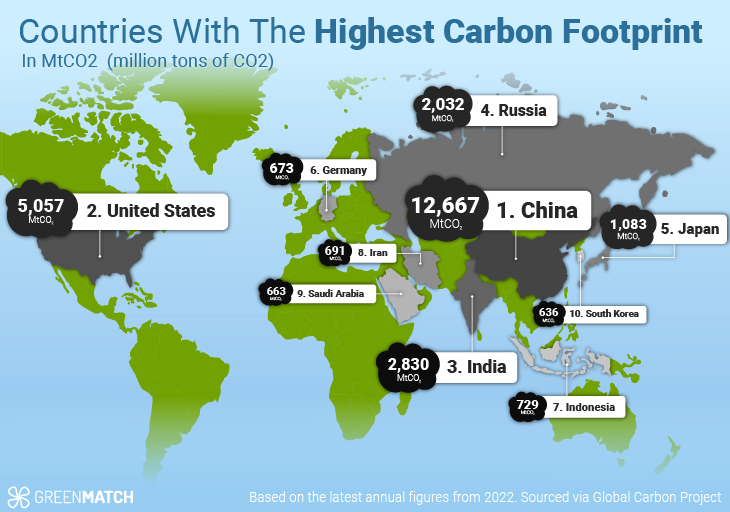Michelle Obama, former First Lady of the United States, has long been a prominent advocate for sustainability and healthy living. However, as a global figure with a demanding public schedule, her lifestyle inevitably contributes to a significant carbon footprint. This article delves into the key insights surrounding Michelle Obama's environmental impact, exploring the factors that shape her carbon emissions, from travel and public engagements to personal choices and advocacy efforts. By examining the balance between her influential role and its ecological consequences, we aim to shed light on the broader implications of high-profile lifestyles in the context of climate change and sustainability.

What Is the Carbon Footprint of Michelle Obama?
The carbon footprint of Michelle Obama, like that of any public figure, is a measure of the total greenhouse gas emissions caused directly or indirectly by her activities. This includes travel, energy use in homes, and other lifestyle factors. As a former First Lady of the United States, her carbon footprint is influenced by her official duties, personal choices, and advocacy work. Understanding her carbon footprint provides insight into the environmental impact of high-profile individuals and their potential role in promoting sustainability.
1. Michelle Obama's Travel and Its Environmental Impact
Michelle Obama's travel, both during her time as First Lady and afterward, has contributed significantly to her carbon footprint. Official trips, international visits, and personal travel often involve the use of private jets and other high-emission transportation methods. For example, her advocacy work for education and health initiatives has required extensive travel, which increases her overall carbon emissions.
See Also What Is Andrew Tate's Carbon Footprint? A Closer Look
What Is Andrew Tate's Carbon Footprint? A Closer Look| Type of Travel | Estimated Emissions (CO2) |
|---|---|
| International Flights | High |
| Domestic Flights | Moderate |
| Ground Transportation | Low to Moderate |
2. Energy Use in Michelle Obama's Residences
The energy consumption of Michelle Obama's residences, including the White House and her private homes, plays a role in her carbon footprint. The White House, for instance, is a large property with significant energy demands for heating, cooling, and electricity. While efforts have been made to improve energy efficiency, the scale of the property inherently leads to higher emissions.
| Residence | Energy Consumption |
|---|---|
| White House | High |
| Private Homes | Moderate |
3. Michelle Obama's Advocacy for Sustainability
Michelle Obama has been a vocal advocate for sustainability and healthy living, particularly through her Let's Move! campaign and her work on nutrition. While her advocacy promotes environmentally friendly practices, the carbon footprint of organizing and promoting these initiatives must also be considered. Events, travel, and production of materials all contribute to emissions.
| Initiative | Environmental Impact |
|---|---|
| Let's Move! Campaign | Moderate |
| Public Speaking Engagements | Low to Moderate |
4. The Role of Public Figures in Reducing Carbon Footprints
Public figures like Michelle Obama have a unique opportunity to lead by example in reducing their carbon footprints. By adopting sustainable practices and promoting environmental awareness, they can influence public behavior and policy. Michelle Obama's efforts to promote healthy eating and active lifestyles indirectly support environmental sustainability by encouraging plant-based diets and reducing reliance on processed foods.
See Also What Is the Carbon Footprint of Taylor Swift? Exploring the Environmental Impact
What Is the Carbon Footprint of Taylor Swift? Exploring the Environmental Impact| Action | Potential Impact |
|---|---|
| Promoting Plant-Based Diets | High |
| Advocating for Renewable Energy | Moderate |
5. Comparing Michelle Obama's Carbon Footprint to Other Public Figures
When compared to other public figures, Michelle Obama's carbon footprint is influenced by her specific lifestyle and responsibilities. For example, her role as First Lady required extensive travel and public engagements, which may result in a higher footprint than some celebrities but lower than others who frequently use private jets for personal travel.
| Public Figure | Estimated Carbon Footprint |
|---|---|
| Michelle Obama | Moderate to High |
| Celebrity A | High |
| Celebrity B | Low |
What did Obama do for global warming?

The Clean Power Plan
One of President Obama's most significant actions on global warming was the introduction of the Clean Power Plan in 2015. This plan aimed to reduce carbon emissions from power plants, which are among the largest sources of greenhouse gases in the United States. The key components of the plan included:
See Also What Is the Carbon Footprint of Harry Styles? A Closer Look
What Is the Carbon Footprint of Harry Styles? A Closer Look- Setting emission reduction targets for each state, tailored to their specific energy profiles.
- Encouraging the transition from coal-fired power plants to cleaner energy sources like natural gas, wind, and solar.
- Promoting energy efficiency and renewable energy investments to meet the targets.
International Climate Agreements
President Obama played a pivotal role in advancing global cooperation on climate change. His administration was instrumental in the negotiation and signing of the Paris Agreement in 2015. Key achievements in this area include:
- Committing the U.S. to reduce greenhouse gas emissions by 26-28% below 2005 levels by 2025.
- Working with other nations to establish a framework for transparency and accountability in meeting climate goals.
- Securing commitments from major economies like China and India to take significant steps toward reducing emissions.
Fuel Efficiency Standards
Under Obama's leadership, the U.S. implemented stricter fuel efficiency standards for vehicles, which aimed to reduce emissions from the transportation sector. These measures included:
- Setting a target for cars and light trucks to achieve an average of 54.5 miles per gallon by 2025.
- Encouraging the development and adoption of electric vehicles through incentives and infrastructure investments.
- Reducing reliance on fossil fuels and cutting emissions from one of the largest sources of pollution in the U.S.
Investment in Renewable Energy
Obama's administration prioritized the growth of renewable energy through significant investments and policies. Key initiatives included:
- Allocating billions of dollars in federal funding for solar, wind, and other renewable energy projects.
- Expanding the Production Tax Credit (PTC) and Investment Tax Credit (ITC) to incentivize renewable energy development.
- Supporting research and innovation in clean energy technologies to make them more affordable and accessible.
Environmental Protection Agency (EPA) Regulations
The Obama administration empowered the Environmental Protection Agency (EPA) to take stronger actions against climate change. Notable efforts included:
- Regulating methane emissions from oil and gas operations to curb a potent greenhouse gas.
- Implementing the Cross-State Air Pollution Rule to reduce emissions from power plants affecting neighboring states.
- Strengthening air quality standards to protect public health and reduce the impact of climate change.
Who has the highest carbon footprint?

Which Countries Have the Highest Carbon Footprint?
The countries with the highest carbon footprints are typically those with large populations, extensive industrial activities, and high energy consumption. The top contributors include:
- China: As the world's largest emitter, China accounts for nearly 30% of global CO2 emissions due to its heavy reliance on coal and rapid industrialization.
- United States: The U.S. is the second-largest emitter, contributing around 15% of global emissions, driven by high energy consumption and transportation.
- India: India ranks third, with emissions growing rapidly due to population growth, urbanization, and industrial expansion.
Which Industries Contribute the Most to Carbon Emissions?
Certain industries are major contributors to global carbon emissions due to their energy-intensive operations. The top industries include:
- Energy Production: Burning fossil fuels for electricity and heat is the largest source of emissions globally.
- Transportation: The use of gasoline and diesel in cars, trucks, ships, and airplanes significantly contributes to emissions.
- Manufacturing: Industries like cement, steel, and chemicals produce substantial emissions during production processes.
How Do Individual Lifestyles Impact Carbon Footprints?
Individual lifestyles play a significant role in determining personal carbon footprints. Key factors include:
- Transportation Choices: Frequent air travel and reliance on personal vehicles increase emissions.
- Diet: Meat and dairy consumption, particularly beef, have high carbon footprints due to livestock emissions.
- Energy Use: High electricity consumption, especially from non-renewable sources, contributes significantly.
What Role Does Deforestation Play in Carbon Emissions?
Deforestation is a major contributor to carbon emissions, as forests act as carbon sinks. Key points include:
- Loss of Carbon Storage: Trees absorb CO2, and cutting them down releases stored carbon back into the atmosphere.
- Agricultural Expansion: Clearing forests for farming, particularly in regions like the Amazon, drives emissions.
- Biodiversity Impact: Deforestation disrupts ecosystems, further exacerbating climate change.
How Do Wealth and Consumption Patterns Affect Carbon Footprints?
Wealthier individuals and nations tend to have higher carbon footprints due to consumption patterns. Key aspects include:
- High Energy Consumption: Wealthier households often use more energy for heating, cooling, and appliances.
- Luxury Goods: The production and transportation of luxury items contribute significantly to emissions.
- Travel Habits: Frequent international travel, especially by air, is common among wealthier individuals.
What did Michelle Obama do for the world?

Advocacy for Education and Youth Empowerment
Michelle Obama has been a tireless advocate for education and youth empowerment. She launched the Reach Higher initiative, which encourages young people to pursue higher education and career training. Her efforts have focused on:
- Promoting the importance of college readiness and financial aid awareness.
- Partnering with schools and organizations to provide resources for students.
- Inspiring young people to set ambitious goals and work hard to achieve them.
Promoting Healthy Living and Nutrition
Michelle Obama spearheaded the Let's Move! campaign, aimed at combating childhood obesity and promoting healthier lifestyles. Her initiatives included:
- Encouraging schools to serve healthier meals and increase physical activity.
- Working with local communities to improve access to fresh, affordable food.
- Educating families about the importance of nutrition and exercise.
Support for Military Families
Michelle Obama co-founded the Joining Forces initiative with Dr. Jill Biden to support military families. Her work in this area included:
- Advocating for employment opportunities for veterans and military spouses.
- Raising awareness about the challenges faced by military families.
- Partnering with businesses and organizations to provide resources and support.
Global Advocacy for Girls' Education
Michelle Obama has been a global advocate for girls' education, particularly through the Let Girls Learn initiative. Her efforts have focused on:
- Addressing barriers that prevent girls from attending school, such as poverty and cultural norms.
- Partnering with governments and organizations to fund educational programs.
- Empowering girls to become leaders in their communities.
Promoting Women's Rights and Leadership
Michelle Obama has been a vocal supporter of women's rights and leadership. She has worked to:
- Inspire women and girls to pursue leadership roles in all fields.
- Advocate for equal pay and opportunities for women in the workplace.
- Highlight the importance of mentorship and support networks for women.
What is the US average carbon footprint per person?

The US average carbon footprint per person is approximately 16 tons of CO2 equivalent per year. This figure is significantly higher than the global average, which is around 4 tons per person annually. The high carbon footprint in the US is primarily due to factors such as energy consumption, transportation, and dietary habits.
What Factors Contribute to the US Carbon Footprint?
The US carbon footprint is influenced by several key factors:
- Energy Consumption: The US relies heavily on fossil fuels for electricity and heating, contributing significantly to carbon emissions.
- Transportation: High reliance on personal vehicles, especially gas-powered cars, increases emissions.
- Diet: A diet rich in meat and dairy products, which have high carbon footprints, plays a role.
- Waste Generation: High levels of waste production and inefficient recycling systems add to the carbon footprint.
- Industrial Activities: Manufacturing and industrial processes are major sources of greenhouse gas emissions.
How Does the US Carbon Footprint Compare Globally?
The US carbon footprint is one of the highest in the world:
- Global Average: The global average carbon footprint is about 4 tons per person, far lower than the US average.
- Developed Nations: While other developed nations like Canada and Australia also have high footprints, the US often exceeds them.
- Developing Nations: Countries like India and China have lower per capita emissions, though their total emissions are high due to large populations.
What Are the Main Sources of US Carbon Emissions?
The primary sources of carbon emissions in the US include:
- Transportation: Accounts for nearly 29% of total emissions, with cars, trucks, and airplanes being major contributors.
- Electricity Production: Responsible for about 25% of emissions, primarily from coal and natural gas power plants.
- Industry: Contributes around 23% through manufacturing, construction, and chemical production.
- Agriculture: Makes up approximately 10%, with livestock and soil management being key factors.
- Residential and Commercial Activities: Heating, cooling, and lighting in buildings account for about 13%.
How Can Individuals Reduce Their Carbon Footprint in the US?
Individuals can take several steps to lower their carbon footprint:
- Use Public Transportation: Opt for buses, trains, or carpooling to reduce reliance on personal vehicles.
- Switch to Renewable Energy: Install solar panels or choose green energy providers for electricity.
- Adopt a Plant-Based Diet: Reducing meat and dairy consumption can significantly lower emissions.
- Reduce, Reuse, Recycle: Minimize waste and recycle materials to decrease landfill emissions.
- Energy-Efficient Appliances: Use energy-efficient lighting, heating, and cooling systems to cut energy use.
What Policies Are in Place to Address the US Carbon Footprint?
Several policies aim to reduce the US carbon footprint:
- Clean Air Act: Regulates air emissions and sets standards for pollutants.
- Renewable Energy Incentives: Tax credits and subsidies for solar, wind, and other renewable energy sources.
- Vehicle Emission Standards: Regulations to improve fuel efficiency and reduce emissions from cars and trucks.
- Carbon Pricing: Some states have implemented carbon taxes or cap-and-trade systems to limit emissions.
- International Agreements: Participation in global efforts like the Paris Agreement to combat climate change.
Frequently Asked Questions (FAQ)
What is Michelle Obama's carbon footprint?
Michelle Obama's carbon footprint refers to the total amount of greenhouse gas emissions generated by her activities, including travel, energy use, and lifestyle choices. While exact figures are not publicly available, her advocacy for sustainability and environmental awareness suggests she likely takes steps to minimize her impact. For instance, during her time as First Lady, she promoted initiatives like the Let's Move! campaign, which indirectly supported healthier, more sustainable food systems.
How does Michelle Obama's travel impact her carbon footprint?
Michelle Obama's travel, particularly during her time as First Lady and in her post-White House life, contributes significantly to her carbon footprint. Official trips, book tours, and speaking engagements often involve air travel, which is a major source of carbon emissions. However, she has been known to advocate for environmental responsibility, and it is possible that she offsets her travel emissions through carbon offset programs or other sustainable practices.
What initiatives has Michelle Obama supported to reduce carbon footprints?
Michelle Obama has been a vocal advocate for sustainability and environmental health. Through initiatives like the White House Kitchen Garden, she promoted local, organic farming, which reduces the carbon footprint associated with food transportation. Additionally, her work with the Let's Move! campaign encouraged healthier eating habits, indirectly supporting lower-emission food systems. These efforts highlight her commitment to reducing environmental impact on a broader scale.
Can Michelle Obama's lifestyle choices influence others to reduce their carbon footprints?
Absolutely. Michelle Obama's lifestyle choices and public advocacy have the potential to inspire millions to adopt more sustainable practices. By promoting healthy eating, physical activity, and environmental awareness, she sets an example that encourages individuals and communities to consider their own carbon footprints. Her influence extends beyond policy, shaping cultural attitudes toward sustainability and climate action.
Leave a Reply


Our Recommended Articles